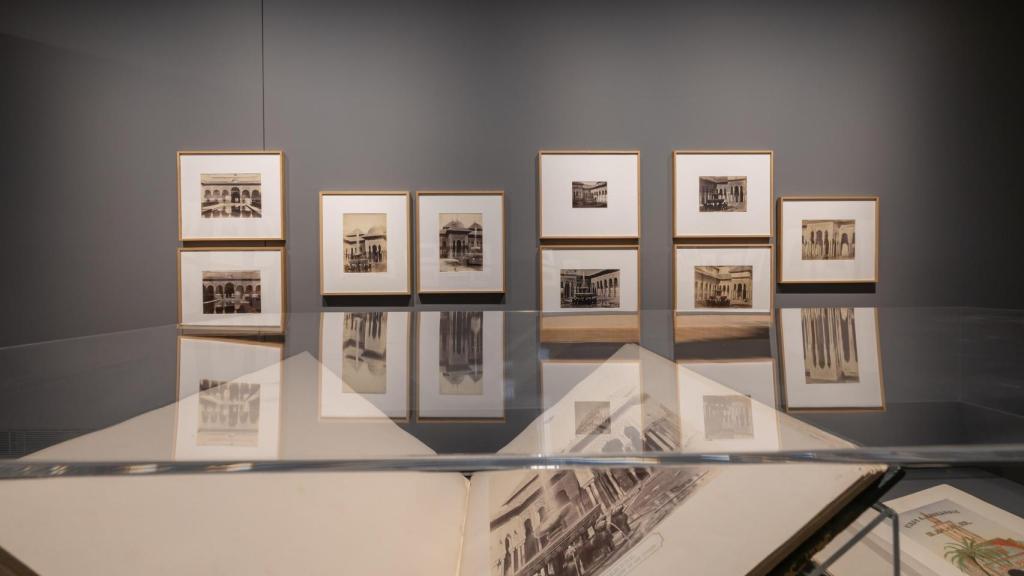The University of Navarra Museum perseveres in its purpose of study and disseminate the origins of the photographic image and its inscription in various contexts: the social-historical, that of the formation of a documentary imaginary of monumental and landscape heritage, and that of its connections with science and art.
With these missions, the MUN was sooner or later doomed to focus its attention on the British Charles Clifford (1819-1863), a pioneer of photography who inventoried monuments, landscapes and portraits with meticulous passion and professionalism using the calotype, first, and later with other more modern procedures. An enlightened sensitivity and insight to intuit the opportunities of an incipient photography market converge in his adventures.
The sample Charles Clifford and the monumental record of Spaincurated by Javier Piñar and Carlos Sánchez, gives a good account of the Welsh photographer’s contribution to the dissemination of this monumental heritage in Europe. While other artists and photographers toured Spain with a romantic and mystified sensibility that favored an exotic imagery, Clifford reconciled a documentary and an artistic desire.
He arrived in Spain in 1852 and until his death in 1863 he displayed frenetic activity, eventually setting up a studio in Madrid with his partner. In retrospect, a milestone to approach his legacy, highlights his Monumental Album of Spain, project that stars in this exhibition: with the Torre del Oro in Seville, the cathedral of Burgos, the aqueduct of Segovia, the Prado Museum in Madrid, the Palace of the Viceroys (Barcelona) or the Patio de la Infanta (Zaragoza), among others.
A journey through these pioneering and emblematic images raises a bundle of reminiscences in relation to other images or prints that, later, they strengthened a canonical imaginary on certain monumental heritage.
Charles Clifford: ‘Upper part of the Cathedral of Burgos’, 1953
They are exhibited 300 pieces on the wall and around 200 in audiovisual projection that belong to different collections: by Carlos Sánchez, which is associated with the MUN Collection, plus pieces from the Museum itself; of the Royal Academy of Fine Arts of San Fernando, of the Archive of the Patronage of the Alhambra and Generalife, of the Library of Andalusia, of the Library of the University of Navarra, of the Fernández Rivero collection of Málaga and of the Academy of Fine Arts of Granada. A diverse cooperative action to rescue Clifford’s memory.
His career has a novelistic bias. His audacity is surprising, given the limitations of the time and the precarious mobility infrastructure, to move around different cities and carry the heavy equipment necessary to produce his photographs in mountainous areas. His trips constituted true expeditions. His audacity is also recognized in his ability to obtain commissions from the Royal Academy of Fine Arts of San Fernando, the aristocracy and Isabel II.
Clifford developed a series of hybrid proposals that would be antecedents of the photobook
Shortly after arriving in Spain, contact architects from the aforementioned Royal Academy, the album Photographias1853which contains a selection of 32 images of monuments from Salamanca and Ávila. Other commissions from that institution took him to monuments in Segovia, Valladolid, León, Santiago and Oviedo.
Between 1854 and 1858 Clifford maintained a privileged professional relationship with Antonio de Orleans, Duke of Montpensierwhich favored the undertaking of new projects in Seville and Andalusia, some of which are those related to Granada and the Alhambra.
After that period he traveled to Valencia, Barcelona, Tarragona and Zaragoza in order to expand his monumental atlas. They soon achieved prestige and celebrity their prints, until achieving an important international projection.
Participation in international exhibitions in the period 1854-1863 gave him the opportunity to obtain other commissions in London and Paris, the leaders of an incipient professional market for photography, while at the same time spread a little-known Spanish monumental heritage.

View of one of the exhibition rooms. Photo: Manuel Castells / MUN
Clifford It stands out mainly for its collection of prints of monumental viewsbut he also attended to other aspects of reality: portraits, reproductions of paintings and artistic objects, documentation of urban reforms and contemporary public works, as well as reports on private possessions and railway construction works.
In this area he carried out the Alcántara Bridge Photographic Views Album. Son Very relevant images of ambitious projects promoted by the Elizabethan Monarchyfor which he documented several of his trips between 1860 and 1862. At the end of his life he undertook a great work, Monumental Album of Spain: Photographic collection of its best architectural workspresented in installments after his death.
Charles Clifford: ‘Salamanca Cathedral’, 1858
Before, he had a stay in London where He collaborated with Queen Victoria, whom he photographsand deliver the album Photographic Souvenir of Spainwhich brought together in 159 images a careful selection of his perception of Spain. This project had an original sequel: the brochure A Photographic Scramble Through Spainwhich included images and texts and offered a synthesis of his traveling and photographic experiences.
Between the heritage of the illustrated album and the conventional photography album, Clifford developed a series of hybrid proposals that sometimes included texts that would be the first antecedents of the photobook practice.
A year ago several universities jointly published A photographic adventure through Spainby Javier Piñar and Carlos Sánchez. “You just have to look at his work to know that We are facing the best photographer of 19th century Spain“, assures Piñar.
The MUN, with an exceptional photography collection, pays tribute to the pioneer Clifford with this exhibition.

